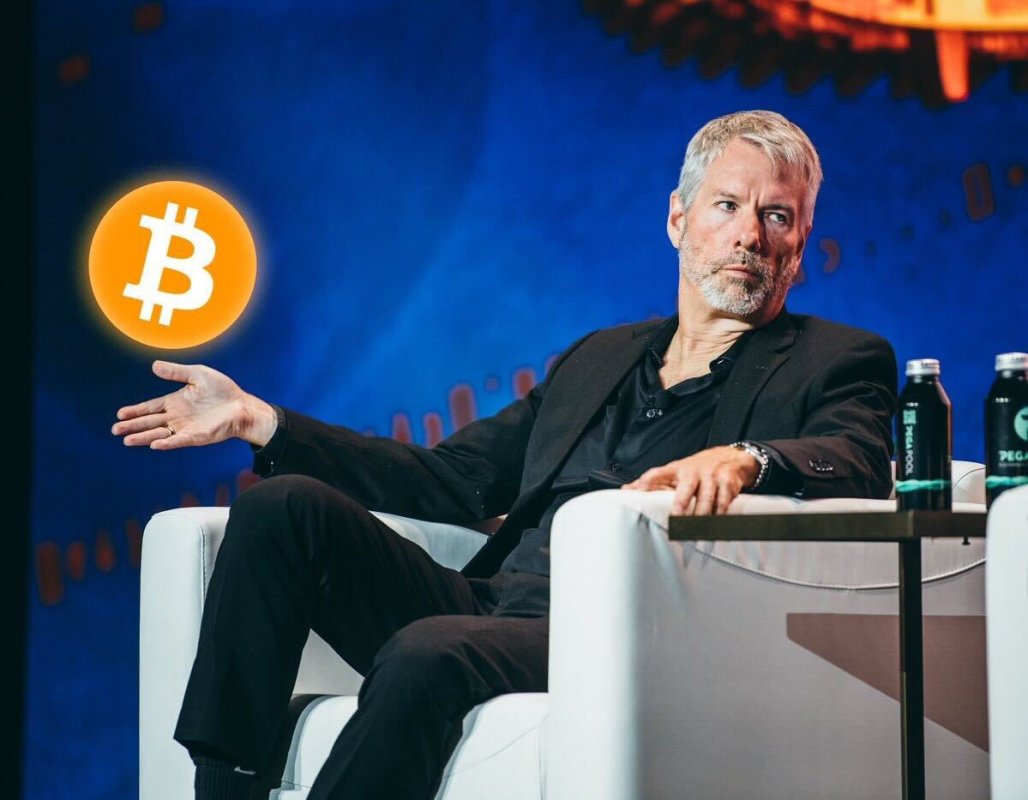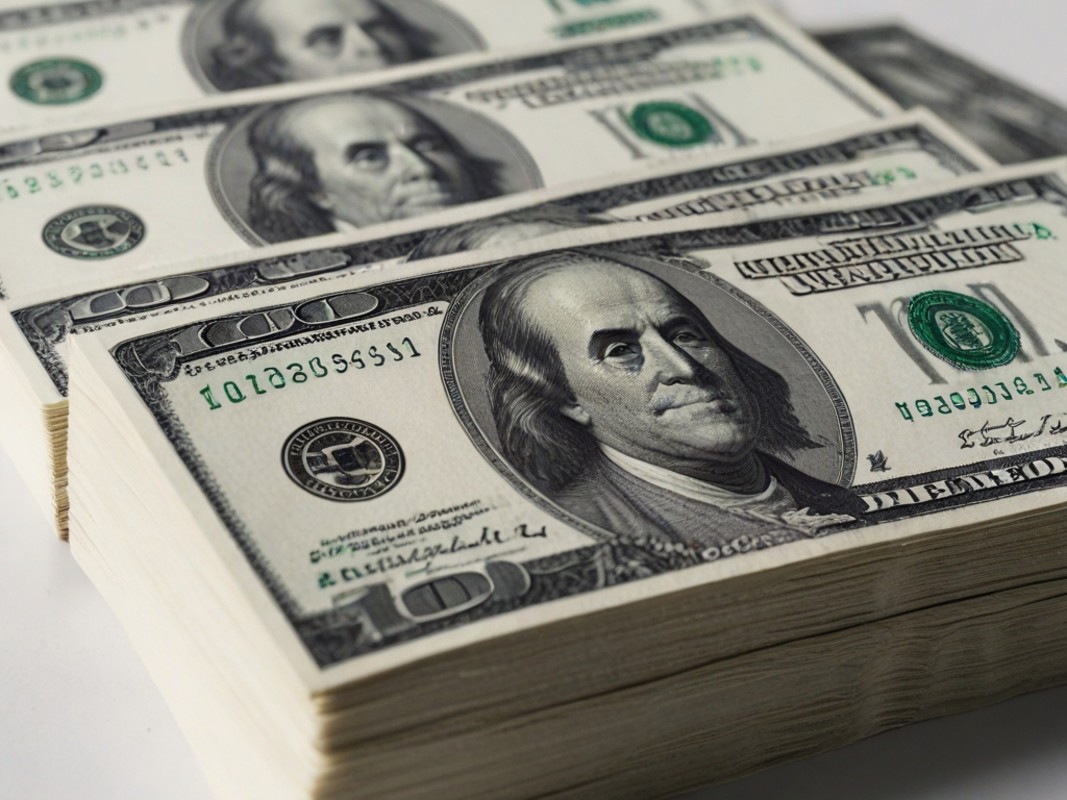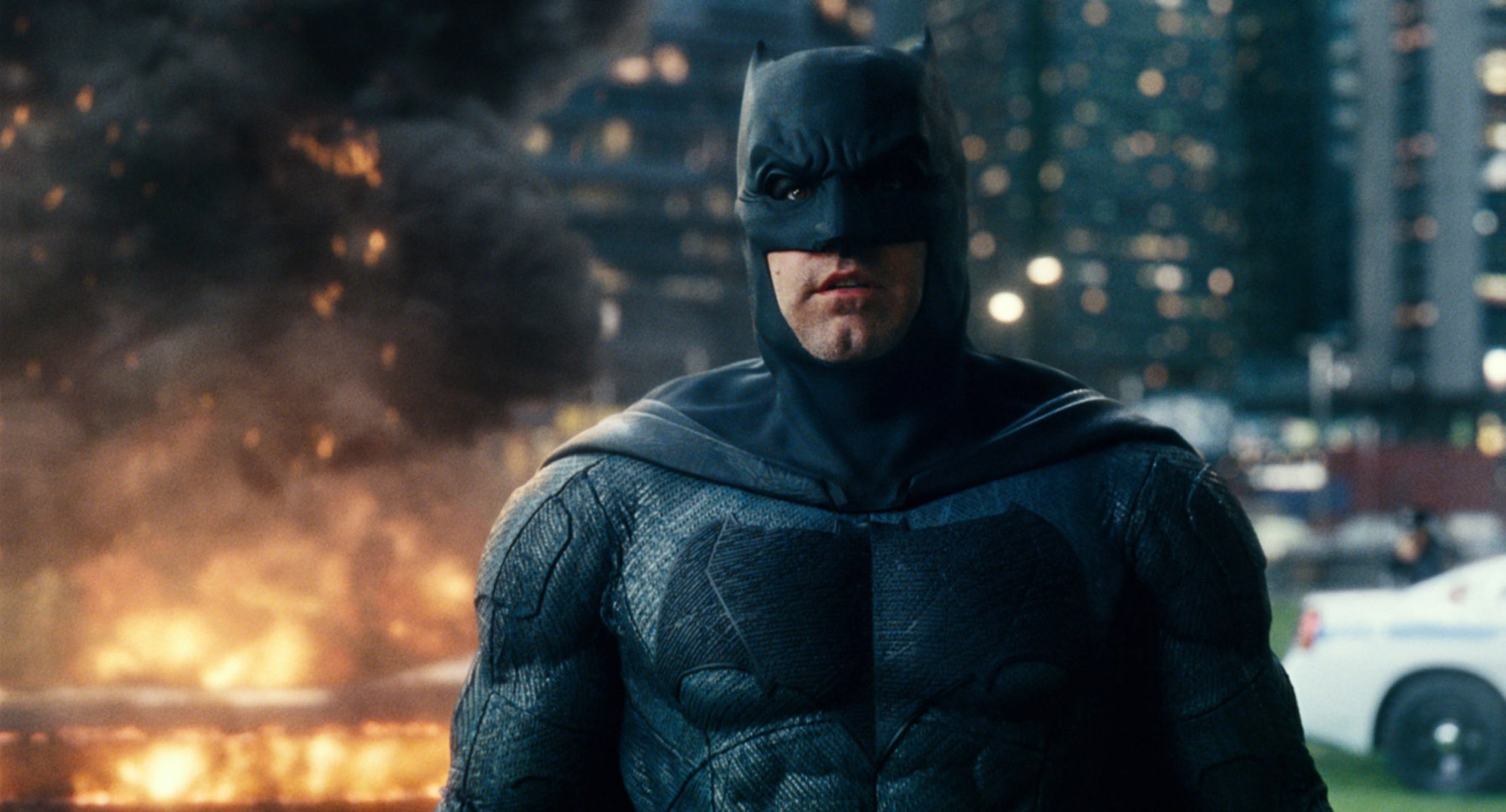Dune 3: What Happens Next in Frank Herbert’s Dune Messiah
This Dune article contains big spoilers. Does Paul Atreides seem okay to you? He’s the unequivocal winner of Dune: Part Two. He gets revenge on the Harkonnens for killing his father, he takes over as Emperor, he marries Princess Irulan, and even gets cool superpowers from drinking the Water of Life. So why is Paul […] The post Dune 3: What Happens Next in Frank Herbert’s Dune Messiah appeared first on Den of Geek.

This Dune article contains big spoilers.
Does Paul Atreides seem okay to you? He’s the unequivocal winner of Dune: Part Two. He gets revenge on the Harkonnens for killing his father, he takes over as Emperor, he marries Princess Irulan, and even gets cool superpowers from drinking the Water of Life.
So why is Paul so… angry? Readers of the book Dune don’t recall Paul being such a jerk at the end of the story, and the David Lynch version ended on an inspirational note. Is Denis Villeneuve taking liberties with the Frank Herbert novel again?
Yes… but also no.
Villeneuve has been very clear about his intention of working toward the second Herbert novel Dune Messiah. Already in Dune: Part Two, we can see Villeneuve set up the darker version of Paul that Herbert imagined in Dune Messiah, work he does by changing the two primary female characters, Alia and Chani.
The Dark Side of Paul Atreides in Dune Messiah
Although Dune was met with unparalleled praise from sci-fi fans, even winning the Hugo Award for Best Novel (tied with This Immortal by Roger Zelazny) and the Nebula Award for Best Novel, Herbert wasn’t satisfied. He intended the novel to warn against charismatic leaders, but too many readers saw Paul as a hero.
Thus, his 1969 sequel Dune Messiah went even further into the human cost of Paul’s ascendence. Set 12 years after the events of Dune, Dune Messiah finds Paul dealing with the consequences of his rule. A Fremen jihad still rages and the death count grows to over 61 billion dead across the galaxy.
Unsurprisingly, there are those who would love nothing more than to depose Paul Muad’Dib and end his reign of terror. The threats to Paul include a conspiracy consisting of Bene Gesserit Reverend Mother Mohiam; Princess Irulan; the Guild Navigator Edric; and Scytale, a shapeshifter for the Bene Tleilax, a secretive sect of genetically altered humans who have their own designs for the future of humanity in space.
The conspiracy works to undermine Paul’s standing with the Fremen and across the galaxy. However, they are not Paul’s only problem. While Chani and Paul’s sister Alia stand loyally by him, discontent within the Fremen weakens his power. Stilgar remains fanatical in his support of Muad’Dib, but others have lost faith.
The Fedaykin Kobra, once a key member of Paul’s overthrow of the Harkonnens and part of his Qizarate religious order of civil servants, wants to increase his own power by working with the conspirators to kill Paul. Furthermore, Scytale takes the form of Lichna, daughter of the trusted Fedaykin Otheym. As Lichna, Scytale urges Otheym to stand against Paul. Although Otheym refuses, Lichna/Scytale succeeds in convincing the old warrior to give Paul his Tleilaxu servant Bijaz, a record-keeper who is secretly in the employ of Scytale. It’s through Bijaz that the Tleilaxu control their ultimate weapon against Paul: a clone of Duncan Idaho, which we’ll get to in a minute.
Together, all these conspirators manage to drive Paul to Otheym’s house, in which a stone burner (read: bomb) is hidden. The blast doesn’t kill Paul, but it does blind him, which, according to Fremen tradition, means he’s supposed to walk off into the desert of Arrakis to die. However, using his prescience, Paul proves that he can see without eyes, which weakens the doubts of the disbelieving Fremen.
None of this is to say that Paul is quite the villain we see in Dune: Part Two. The novel affords him more complexity, as Paul’s prescience convinces him that he must take these steps for the good of humanity and to avoid a darker possible future that will see the human race stagnate and end. But even in his more fleshed-out book version, Paul remains a much darker character in Dune Messiah than he was in Dune, something Villeneuve anticipates in his movies, and will no doubt build upon in Dune 3.
The Importance of Alia and the Return of Duncan Idaho
One of the biggest departures from Dune involved Paul’s sister Alia. In Dune: Part Two, we do see the Bene Gesserit recoil with horror after the pregnant Jessica drinks the Water of Life, but there’s little sense of why that decision matters. The novel shows that the Bene Gesserit consider Alia an abomination because she gains the genetic memory of her ancestors while still in the womb. As readers, we understand their concerns because we later see Alia acting as an adult in a child’s body, robbed of her innocence and just as powerful as her brother.
Dune: Part Two avoids the difficulty of casting a child to portray an adult and instead leaves Alia in the womb. Shots of the fetus in utero indicate her thought processes, as do Jessica’s many conversations with her. But we only see a post-birth Alia in a single shot, a vision of the future where she’s played by Anya Taylor-Joy.
Without the groundwork of the Bene Gesserit’s feelings toward Alia, it might be difficult to understand her role in Dune Messiah. Alia is a co-lead in that novel, a woman whose mere presence drives the Bene Gesserit against Paul.
The conspirators move against Alia and Paul by creating the aforementioned ghola (or clone) of Duncan Idaho, train him as a mentat, and send him as a gift from the Guild Navigator Edric. Renamed Hayt, the Duncan ghola troubles Paul’s mind. But he has a greater effect on Alia, whose genetic memory cannot overcome her youthful desires, and she falls for the potential traitor. Worse, Paul’s acceptance of Hayt inspires rebellion among the Fremen, who mistrust Tleilaxu creations.
Hayt becomes a key part in the conspirators’ move against Paul, especially after Chani’s death (more on that in a minute.). When Chani’s death triggers Hayt’s programming to kill Paul, it’s his relationship with Alia, as much as Duncan’s admiration for Paul, that stays the blade. By proving himself loyal, Hayt/Duncan joins with Alia to take stewardship of the Empire for Paul’s children, as Paul finally walks into the desert to be consumed by Shai-Hulud (i.e. sandworms).
The Children of Dune
To those first encountering Herbert’s story through the Villeneuve movies, Paul’s treatment of Chani in Dune: Part Two might be upsetting. He spends the whole movie promising her that they’ll stay together, only to ditch her for Irulan the first chance he gets to secure a political alliance. Dune: Part Two ends with a furious Chani wrapping a blue headband around her head and storming away.
That blue headband may not mean much to most viewers, but it means everything to the Fremen. When she adopts the color, Chani signals that she is pregnant, presumably with a child that she and Paul will name after his father. However, the timeline gets fuzzy here. Chani and Paul’s first child, Leto II the Elder, is meant to die in the Harkonnen attacks on the Fremen sietches in the novel Dune, but this character is never introduced in Villeneuve’s adaptation, which condenses the timespan of Paul’s journey to mere months on Arrakis as opposed to years. It’s understandable, as there just isn’t enough time to add little Leto to an already stacked ensemble cast.
In Dune the book, the death of Paul’s son serves an important character beat, and not just because it further justifies his anger against the Harkonnens. Throughout Dune Messiah, Paul and Chani try to conceive another child, an heir to continue Atreides rule once Paul is gone. But Irulan resents Paul for not mating with her. A vengeful Irulan secretly gives Chani contraceptives, which prevent her from getting pregnant again, creating tension in Chani’s relationship with Paul and undermining his standing with the Fremen.
Midway through Dune Messiah, Chani reverts to traditional Fremen conception methods, thus avoiding Irulan’s poison, and gives birth to twins, Ghanima and Leto II the Younger. Like Alia before them, the twins have adult consciousness at birth and the genetic memory to recall the thoughts and memories of everyone before them. However, their coming signals a change for Paul. His prescience showed him the death of Chani and the birth of Ghanima. It showed him nothing of Leto II, signaling a change in the path of the universe beyond his vision. The revelation gives Paul a way out of the world he’s created, allowing him to die in the desert a man.
All of these plot points have huge ramifications for the future of the Dune franchise. In particular, Leto II is arguably the most important character in the series, as he becomes the sandworm/human hybrid and tyrant of the galaxy in the third book Children of Dune and the fourth book God Emperor of Dune.
It’s likely you’ll see Leto II in Dune 3, but as a baby and not a worm-man. That transformation occurs in Children of Dune, a story Villeneuve has said he’s not interested in adapting himself.
A Better Chani in Dune 3 Than the Book Version?
To be frank, Chani is never the most dynamic character in Herbert’s work, save for a moment beyond the grave in Children of Dune. In the novel Dune Messiah, she spends most of her time sick and staying beside Paul, her faith almost as unwavering as that of Stilgar. Her death matters as a motivating force for Paul, but not as an end in itself.
Even when Scytale attempts to blackmail Paul into accepting a ghola of Chani (oh, and giving up his power over CHOAM, the all-powerful corporation in the world of Dune), the refusal says more about Paul than it does about Chani. The offer results in the completely blind Paul somehow killing Scytale. When Bijaz makes a similar offer, Hayt/Duncan kills the Tleilaxu, with no recourse to Chani.
Villeneuve imagines Chani as a far more active character in the story, which points to increased tension between her and Paul in his version of Dune Messiah. In Herbert’s novel, the Fremen do question Paul’s leadership, in part because of his occasional lack of faith in his role as Muad’Dib and sometimes because he and Chani cannot produce an heir.
With movie Chani already firmly against Paul’s rise and the holy war the Fremen will wage in his name, we may actually see her as the voice of Fremen resistance in the film version of Dune 3. Instead of feeling guilty about her inability to mother a child, we could see Chani standing against Paul’s reign, while also giving birth and raising the next generation of Atreides rulers. Or perhaps Villeneuve will find a way to stick closer to the tension of one of Dune Messiah‘s main plot points, in which Paul knows through prescience that Chani will die in childbirth and thus tacitly supports Irulan secretly feeding her contraceptives.
Dune 3 and the Doom to Come
At the end of Dune Messiah, Paul is victorious once again, but not in the way you’d expect. He goes into the desert not as Muad’Dib, not as the Kwisatz Haderach, but as Paul Atreides, son of Duke Leto Atreides and father to Leto II and Ghanima. He has revealed the machinations of the Spacing Guild and the Bene Gesserit, dealing a blow to their credibility among the major houses (for a little while, anyway). He has convinced Irulan to repent for her actions, defect from Reverend Mother Mohiam’s service, and care for the twins, thus freeing his family from Bene Gesserit control.
Moreover, by going into the desert as a man, he increases the Fremen’s reverence for him, galvanizing them once again behind the Atreides line, particularly his children as the next generation of rulers. In short, it all worked out in the end… maybe.
Fans sometimes overstate the importance of planning in franchise filmmaking. However, Villeneuve’s approach to Paul’s arc in the first two Dune movies emphasizes one of the core themes of the story that really comes to the forefront in Messiah. Paul is not the hero of Dune. He’s not a good guy like Luke Skywalker, who more or less does the right thing and saves the day. He’s a man led down a dark path, who gets overwhelmed by the power given him.
Readers know that Paul’s story does not really end when he goes into the desert, that he’ll continue to fight against the religion he once embraced. But until then, the power rests in Chani and Alia. By making changes to Chani and Alia, Villeneuve prepares viewers to understand the cost of Paul’s choices, a cost that affects two of the people closest to him. Even in Dune: Part Two, Paul is not, in any way, okay.
Dune: Part Two is in theaters now.
The post Dune 3: What Happens Next in Frank Herbert’s Dune Messiah appeared first on Den of Geek.
What's Your Reaction?






















































